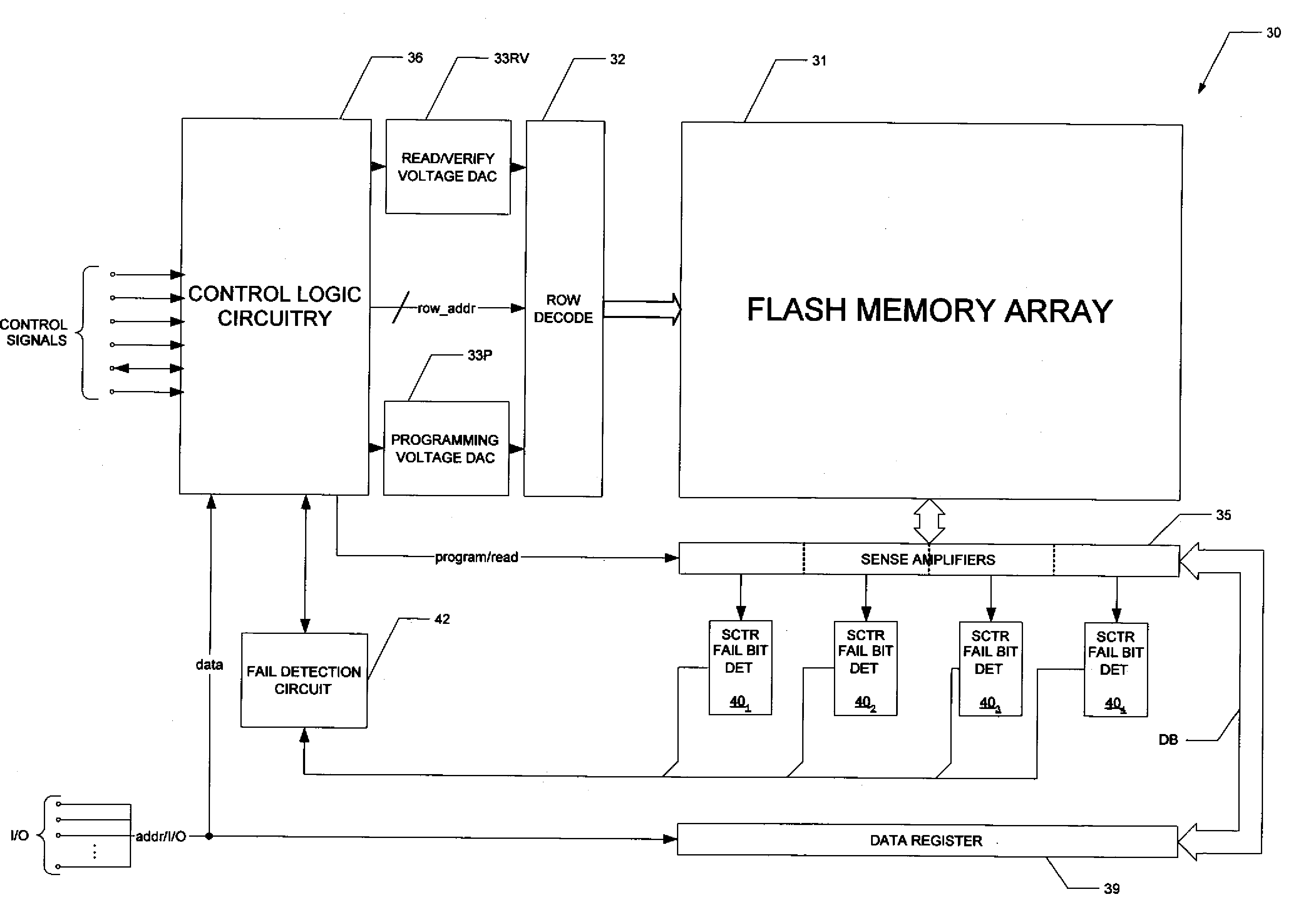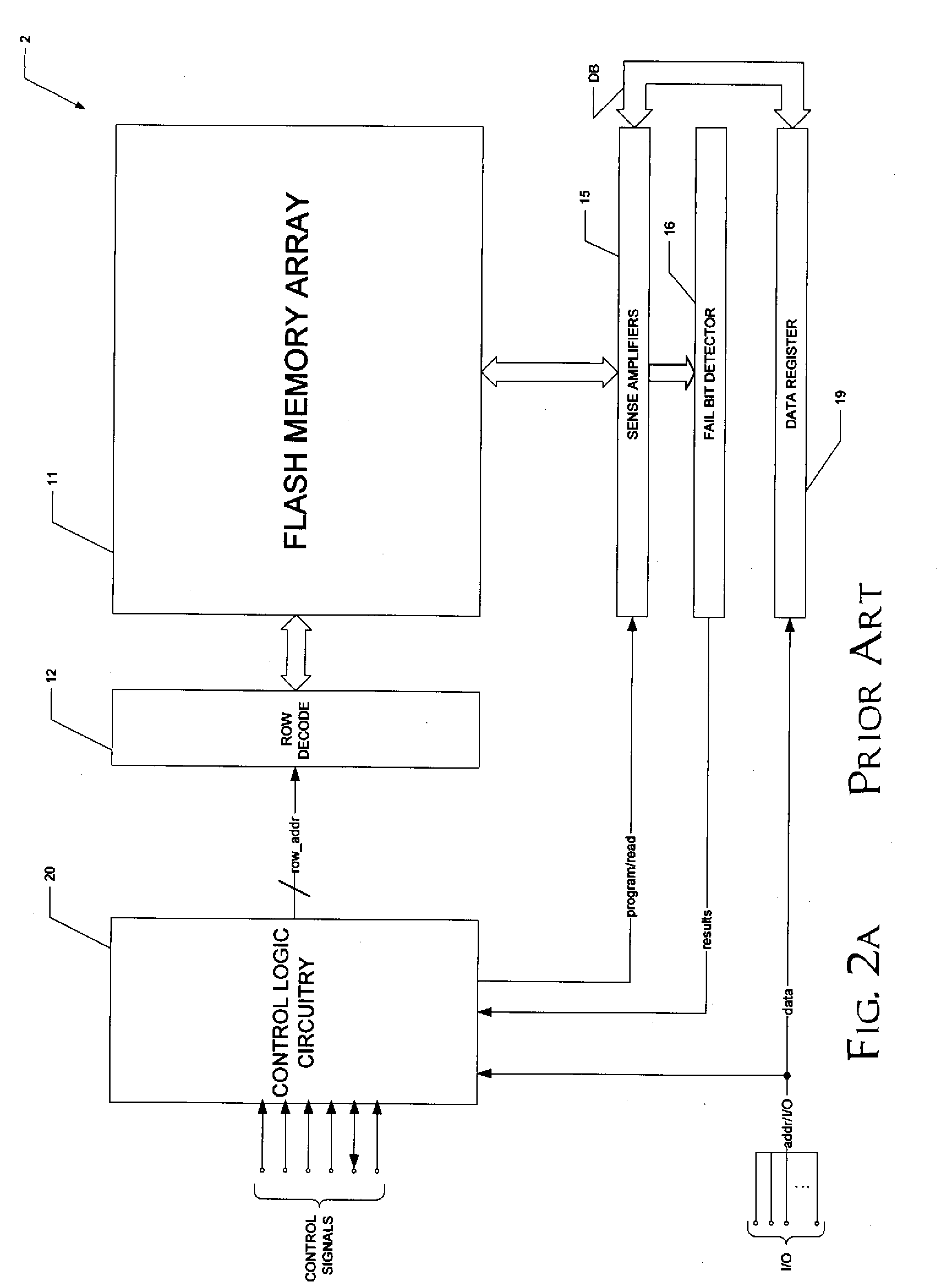Partial Page Fail Bit Detection in Flash Memory Devices
a flash memory device and fail bit technology, applied in error detection/correction, digital storage, instruments, etc., can solve the problems of consuming substantial time and power, cells are slower to program or erase, and cannot be programmed or erased in any way, so as to improve the efficiency of error correction coding, modest error correction coding capacity, and enhanced scaling of flash memory page sizes
- Summary
- Abstract
- Description
- Claims
- Application Information
AI Technical Summary
Benefits of technology
Problems solved by technology
Method used
Image
Examples
Embodiment Construction
[0050]This invention will be described in connection with its preferred embodiment, namely as implemented into a flash memory device, for example a flash memory device including multi-level programming cells (MLC) arranged in NAND fashion. However, it is contemplated that this invention may also be beneficial if applied in other types of memory architectures and devices. It is contemplated that such other alternative realizations are within the scope of this invention. Accordingly, it is to be understood that the following description is provided by way of example only, and is not intended to limit the true scope of this invention as claimed.
[0051]FIG. 4 illustrates an example of the architecture of flash memory device 30 according to the preferred embodiments of the invention. The construction of flash memory device 30 is similar, in many respects, as that of conventional flash memory devices such described in FIG. 2a. As such, flash memory device 30 includes flash memory array 31 ...
PUM
 Login to View More
Login to View More Abstract
Description
Claims
Application Information
 Login to View More
Login to View More - R&D
- Intellectual Property
- Life Sciences
- Materials
- Tech Scout
- Unparalleled Data Quality
- Higher Quality Content
- 60% Fewer Hallucinations
Browse by: Latest US Patents, China's latest patents, Technical Efficacy Thesaurus, Application Domain, Technology Topic, Popular Technical Reports.
© 2025 PatSnap. All rights reserved.Legal|Privacy policy|Modern Slavery Act Transparency Statement|Sitemap|About US| Contact US: help@patsnap.com



